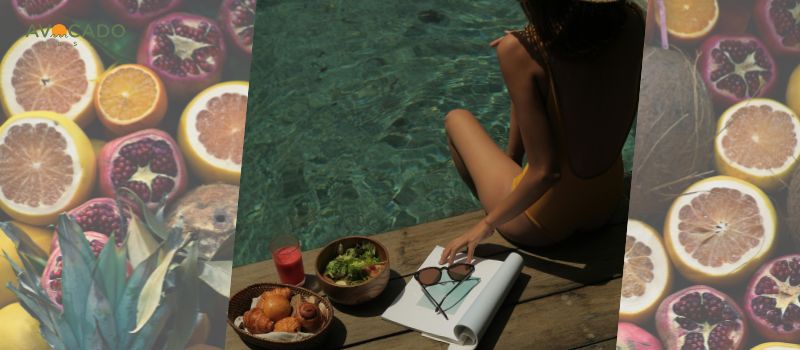Bali, with its fertile volcanic soil and year-round sunshine, is a paradise for tropical fruits that not only delight the taste buds but also nourish the body.
From the bustling markets of Tabanan to the quiet orchards in West Bali, fruits like papaya, mango, and dragon fruit are celebrated not just for their sweetness but also for their antioxidant power.
These natural compounds protect the body from oxidative stress, support skin radiance, and strengthen immunity perfect for travelers and locals living in Bali’s tropical climate.
In Balinese culture, food is more than just sustenance; it’s part of the Tri Hita Karana philosophy, which emphasizes harmony with nature, community, and the divine.
Consuming fruits in season, supporting local farmers, and respecting the island’s natural rhythm are all part of a lifestyle that promotes glowing health.
Let’s dive into the antioxidant treasures of Bali’s tropical fruits and learn how to enjoy them for maximum benefit.
1. Papaya – Vitamin C for Skin Radiance
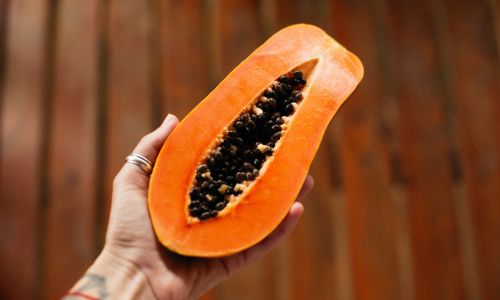
Papaya, available abundantly during Bali’s wet season (November–March), is a nutritional superstar.
A single cup (about 140g) provides over 100% of your daily vitamin C needs. Vitamin C is one of the most powerful antioxidants, crucial for collagen production, which keeps your skin firm and radiant.
It also helps fight off infections, a must when adjusting to Bali’s tropical climate.
How to Enjoy:
- Blend papaya with coconut water and lime juice for a refreshing morning smoothie.
- Add slices to sayur urab for a Balinese-style salad.
- Best consumed within 2–3 days of purchase to maintain its antioxidant strength.
Tip: Sprinkle papaya with chia seeds for an omega-3 boost that enhances skin hydration.
2. Mango – Beta-Carotene for Cellular Protection
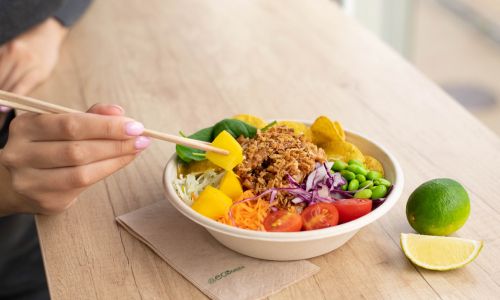
During the wet season, markets in Tabanan overflow with mangoes, golden and fragrant.
Mangoes are rich in beta-carotene, a precursor to vitamin A that supports eye health, protects skin from UV damage, and reduces inflammation.
One cup of mango (165g) provides nearly 3,800 IU of vitamin A.
💡 How to Enjoy:
- Slice into breakfast bowls with granola and coconut flakes.
- Blend with yogurt and turmeric for a Balinese-inspired smoothie.
- Store in the refrigerator for up to 5 days for maximum freshness.
✨ Tip: Add a pinch of black pepper to boost the absorption of beta-carotene—a trick borrowed from Balinese jamu.
3. Dragon Fruit – Anthocyanins for Anti-Aging
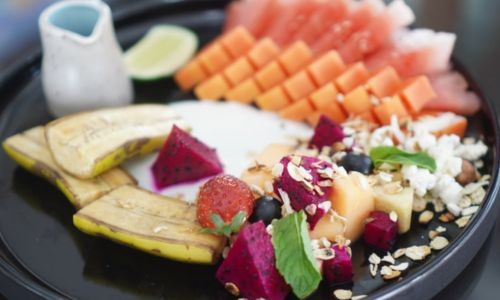
Dragon fruit (buah naga), especially the vibrant pink or purple varieties, is a feast for the eyes and the body.
Its antioxidants, called anthocyanins, help combat premature aging and improve skin elasticity. A single cup (180g) offers both vitamin C and fiber, supporting digestion and radiant skin.
💡 How to Enjoy:
- Blend with avocado and coconut milk for a creamy, skin-boosting smoothie.
- Dice into salads for a colorful twist.
- Buy from local markets in Pemuteran during the dry season (April–October).
✨ Tip: Add a teaspoon of honey for natural sweetness without processed sugar.
4. Mangosteen – Xanthones for Inflammation Reduction
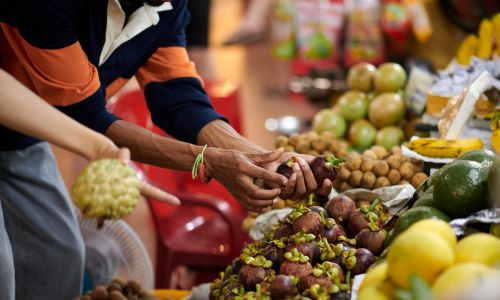
Known as the “queen of fruits,” mangosteen is a prized antioxidant powerhouse in Bali.
It contains xanthones, rare compounds with potent anti-inflammatory properties. Eating mangosteen not only supports glowing skin but also boosts mental clarity and immune strength.
💡 How to Enjoy:
- Eat fresh as a mid-day snack.
- Blend with coconut water for a rejuvenating drink.
- Buy from Gilimanuk markets during the wet season and consume within 2 days.
✨ Tip: Pair mangosteen with grated coconut for a traditional Balinese snack rich in healthy fats.
5. Rambutan – Vitamin C and Polyphenols for Energy
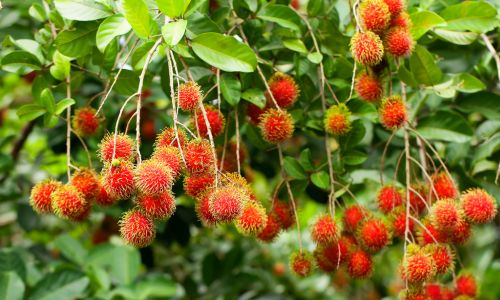
Rambutan, with its hairy red skin, is one of Bali’s most fun fruits to eat.
Beneath the peel lies juicy flesh packed with vitamin C and polyphenols, which help fight fatigue and improve mood by reducing oxidative stress in the brain.
💡 How to Enjoy:
- Eat fresh as a sweet, hydrating snack.
- Blend with banana and coconut water for an energizing smoothie.
- Store in a cool, shaded place for 3–5 days to maintain freshness.
✨ Tip: Add a sprig of mint for a refreshing Balinese-style twist.
6. Watermelon – Lycopene for Heart and Skin Health
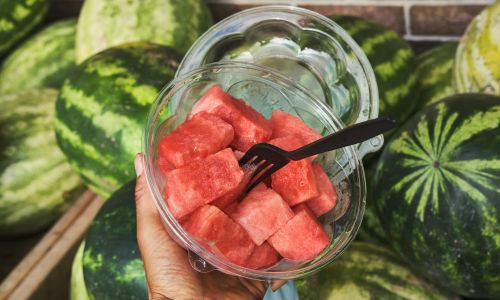
Perfect for Bali’s hot afternoons, watermelon is both hydrating and antioxidant-rich.
Its lycopene content supports heart health and protects the skin from UV damage, essential when spending long days exploring rice terraces or snorkeling in Menjangan.
💡 How to Enjoy:
- Slice into salads with cucumber and mint.
- Blend with lime juice for a post-adventure hydration drink.
- Best consumed within 2 days to maximize lycopene.
✨ Tip: Chill watermelon before blending to enhance its cooling effect.
7. Pineapple – Flavonoids for Immune Support

Pineapple is a year-round staple in West Bali, valued for its flavonoids and vitamin C.
These antioxidants strengthen immunity and reduce inflammation, while its enzymes aid digestion after heavy meals.
💡 How to Enjoy:
- Blend with ginger and coconut water for a zesty smoothie.
- Add to nasi campur for a sweet and tangy balance.
- Store refrigerated for up to 5 days.
✨ Tip: Use pineapple cores in smoothies to reduce waste and retain flavonoids, reflecting Bali’s sustainable practices.
8. Avocado – Vitamin E for Skin Hydration
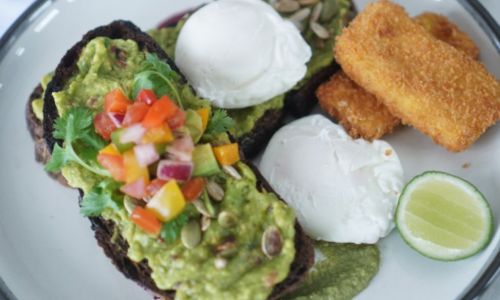
Avocado, often grown in Bali’s highlands, is rich in vitamin E and healthy fats.
This combination hydrates skin, protects against sun damage, and promotes a radiant glow.
💡 How to Enjoy:
- Mash onto red rice toast for a nourishing breakfast.
- Blend with spinach and coconut milk for a green smoothie.
- Store in a cool place for 3–4 days.
✨ Tip: Pair with lime juice to enhance vitamin E absorption and add a Balinese flavor.
How to Incorporate Fruits into a Daily Routine
To fully benefit from these antioxidant-rich fruits, try these practical tips:
- Morning Rituals: Start the day with smoothies combining papaya, mango, or dragon fruit. Add grated turmeric for an extra wellness boost.
- Snack Smart: Choose fresh mangosteen or rambutan instead of processed sweets.
- Balinese Meals: Mix pineapple or avocado into sayur urab for a nutrient-rich salad.
- Eco-Friendly Shopping: Visit local markets early with reusable bags to support Bali’s zero-waste movement.
- Minimal Processing: Consume fruits raw or lightly blended to retain antioxidants.
Experiencing Antioxidant Culture in West Bali
Wellness in Bali isn’t just about what you eat it’s about how you connect with the island’s culture.
Markets in Pemuteran and Tabanan showcase freshly harvested fruits, eco-lodges near West Bali National Park serve antioxidant-packed menus, and cooking classes in Gilimanuk teach how to prepare traditional dishes using these fruits.
By participating in these experiences, you support local communities while nourishing your own health.
Final Thoughts
Bali’s tropical fruits are more than a treat they’re a wellness secret rooted in culture, sustainability, and natural abundance. By adding these antioxidant-rich foods into your daily meals, you’ll support radiant skin, strong immunity, and long-lasting vitality.
For a true taste of this bounty, visit AVOCADO RESTO in West Bali, where smoothies, salads, and plant-based dishes celebrate local fruits in harmony with Bali’s wellness traditions.
